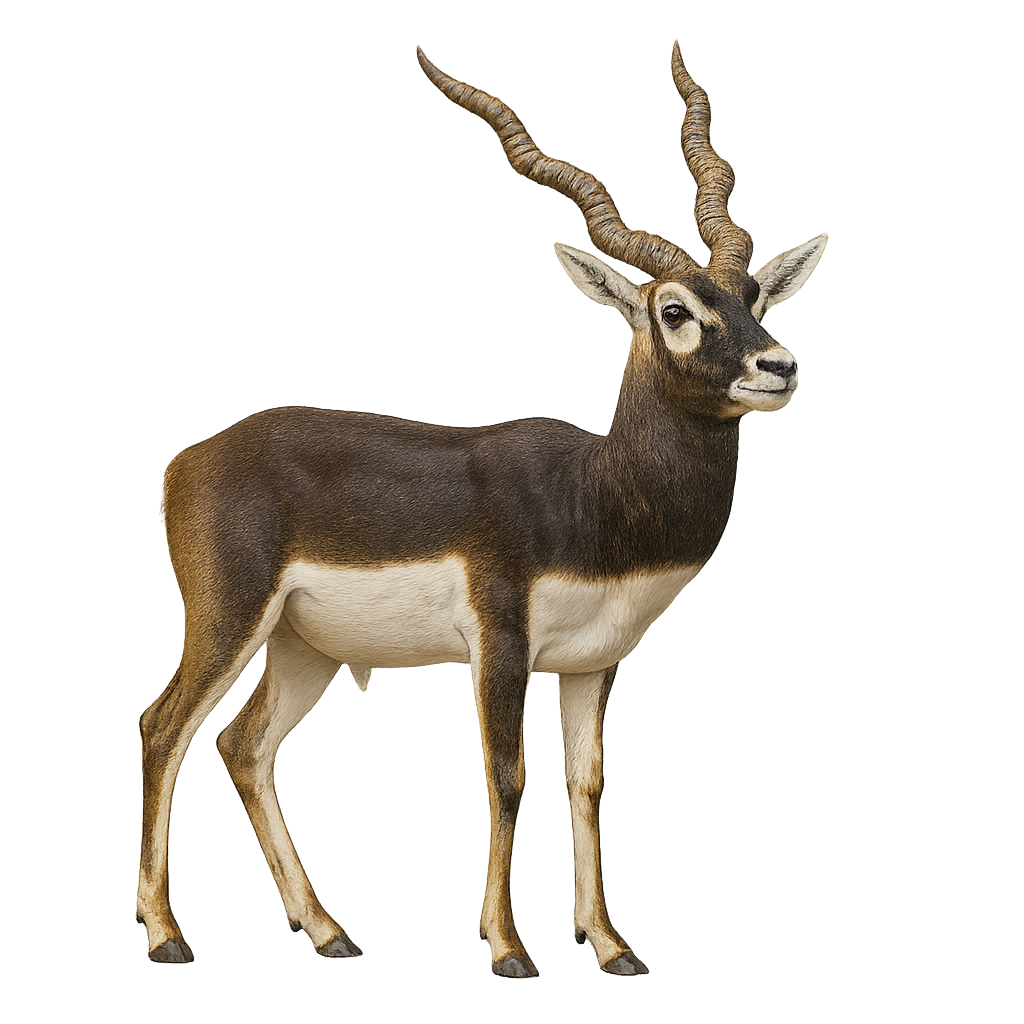Your wildlife photography guide.
Explore the blackbuck in detail, study its behavior, prepare your shots.
Where to observe and photograph the blackbuck in the wild
Learn where and when to spot the blackbuck in the wild, how to identify the species based on distinctive features, and what natural environments it inhabits. The WildlifePhotographer app offers tailored photography tips that reflect the blackbuck’s behavior, helping you capture better wildlife images. Explore the full species profile for key information including description, habitat, active periods, and approach techniques.
Blackbuck
Scientific name: Antilope cervicapra

IUCN Status: Near Threatened
Family: BOVIDAE
Group: Mammals
Sensitivity to human approach: Suspicious
Minimum approach distance: 30 m
Rut period: March to April
Gestation: 170-180 jours
Births: August to September
Habitat:
Grassy plains, open savannas, sparse forests
Activity period :
Primarily active during the day, with peak activity in the morning and late afternoon.
Identification and description:
The Blackbuck, or Antilope cervicapra, is a species of antelope native to the Indian subcontinent. It is easily identifiable by its spiral horns and contrasting coat: males have a striking black and white coloration, while females and juveniles are fawn-colored. These antelopes primarily inhabit grassy plains and open savannas, moving in herds. They are diurnal, spending most of the day grazing. Their diet mainly consists of grasses, but they also eat leaves and fruits. Blackbucks are known for their speed and agility, which help them evade predators.
Recommended lens:
400 mm – adjust based on distance, desired framing (portrait or habitat), and approach conditions.
Photography tips:
To photograph the Blackbuck, it is advisable to use a telephoto lens of 400mm or more to capture detailed images without disturbing the animal. The best times for photography are early morning or late afternoon when the light is soft and golden. Look for herds in grassy plains and be ready to quickly adjust your focus, as these antelopes are very fast. Use a tripod to stabilize your camera and achieve sharp images.
The WildlifePhotographer App is coming soon!
Be the first to explore the best nature spots, track rutting seasons, log your observations, and observe more wildlife.
Already 1 430 wildlife lovers subscribed worldwide

